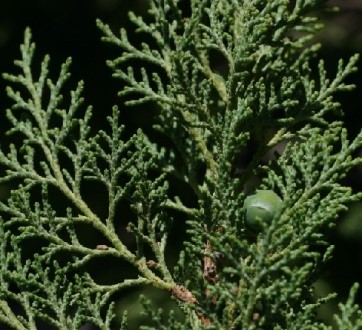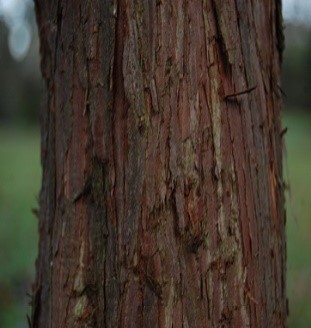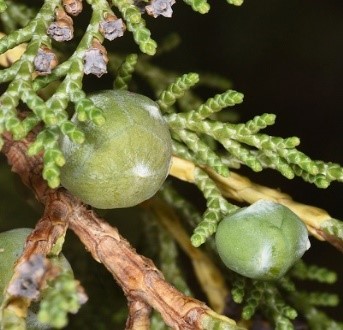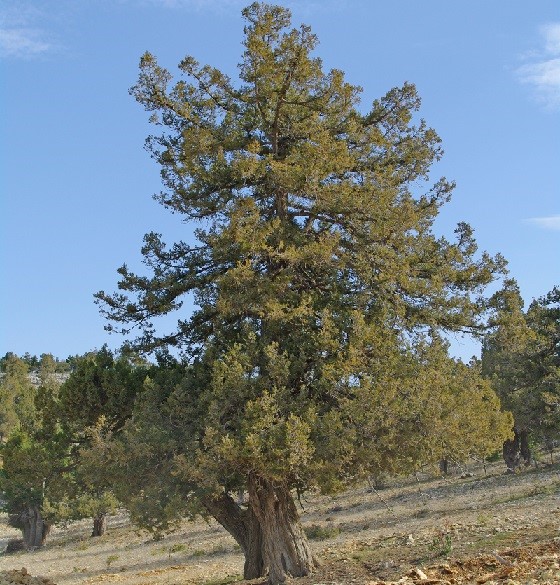Trees
Juniperus excelsa M. Bieb.
Juniperus excelsa M. Bieb.
Description :
A
medium-sized, evergreen tree, up to 25m tall with diameters of 0.6 to 0.8 m. It
has a conical crown. The leaves are scale like. There are two leaf shapes, one
sharp and needle like and the other flat and feather like. It is monoecious.
The male flowers or cones are located at the tips of the branches while the
female cones are on shorter branchlets. The flowers appear between May and
June. The fruit is a woody cone 0.7 cm in diameter. Each cone contains 2 to 5
seeds. The cones mature between September and October. It is reproduced mainly
from seed. Under natural conditions layering has been reported. Seed viability
is approximately 5 percent. It has to be sown immediately after collection to
get good germination. In the nursery beds, the seed keeps on germinating for 2
years, the first germination starting within 2 months after sowing. Seedlings
are pricked in poly bags when 4-5 months old in the beds. Field planting is
successful when plants are 2 years old in the nursery. A very slow growing
tree, it will reach maturity in 240 to 700 years. Attains 2.5 cm diameter and
one m height in 50 years. It is susceptible to bark beetles, especially in a
stressed condition and is attacked by dwarf mistletoe, Arceuthobium oxycedri.
Its wood is twisted, greyish white and soft and character.
Distribution :
The
tree is native to the Subcontinent and southeastern Europe. In Pakistan it is
found in the dry inner valleys of Balochistan, Kurram, Gilgit Baltistan,
and Kaghan. A very intolerant tree that grows on a variety of fertile to rocky
soils. It is found growing in pure groups. It requires a precipitation zone of
200 to 2500 mm/yr or more, with much of the precipitation falling as snow. It
prefers an arid cold, temperate climate with a temperature range of -30 to 30°C
elevations from 2000 to 4000 m.
Uses :
This
is a very important tree for watershed protection throughout most its range. In
many areas it has been harvested for fuel without any thought of regeneration.
A major effort is needed to reforest these valuable watersheds with this tree
and its associates. It is both drought and frost hardy. It has a very well
developed, spreading root system. Also used as fuel, pencils, gin (berries),
medicinal (oil from fruit is carminative, stimulants, diuretic).



